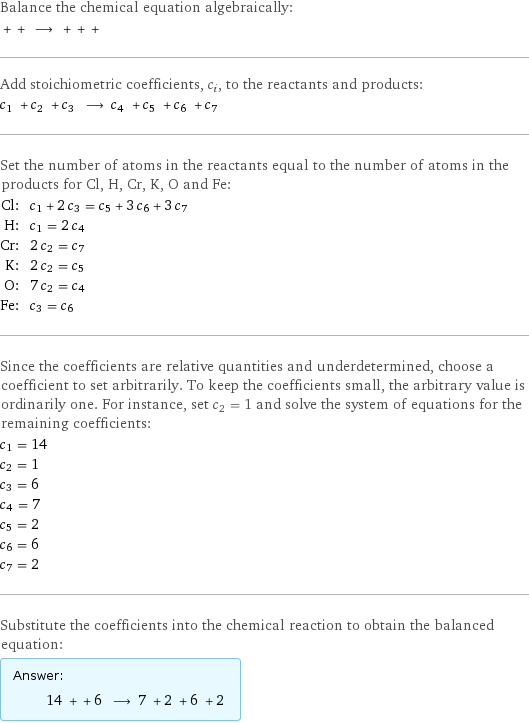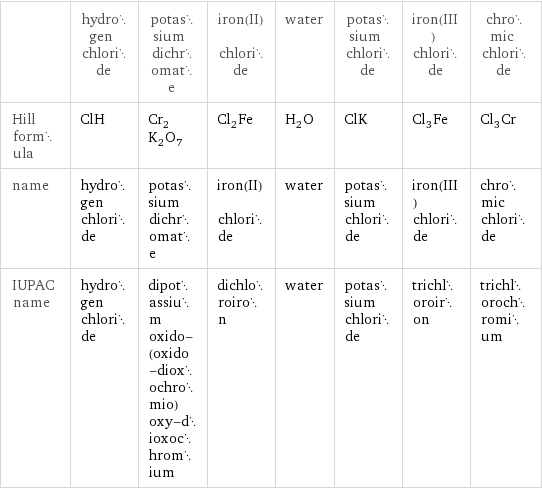Input interpretation

hydrogen chloride + potassium dichromate + iron(II) chloride ⟶ water + potassium chloride + iron(III) chloride + chromic chloride
Balanced equation

Balance the chemical equation algebraically: + + ⟶ + + + Add stoichiometric coefficients, c_i, to the reactants and products: c_1 + c_2 + c_3 ⟶ c_4 + c_5 + c_6 + c_7 Set the number of atoms in the reactants equal to the number of atoms in the products for Cl, H, Cr, K, O and Fe: Cl: | c_1 + 2 c_3 = c_5 + 3 c_6 + 3 c_7 H: | c_1 = 2 c_4 Cr: | 2 c_2 = c_7 K: | 2 c_2 = c_5 O: | 7 c_2 = c_4 Fe: | c_3 = c_6 Since the coefficients are relative quantities and underdetermined, choose a coefficient to set arbitrarily. To keep the coefficients small, the arbitrary value is ordinarily one. For instance, set c_2 = 1 and solve the system of equations for the remaining coefficients: c_1 = 14 c_2 = 1 c_3 = 6 c_4 = 7 c_5 = 2 c_6 = 6 c_7 = 2 Substitute the coefficients into the chemical reaction to obtain the balanced equation: Answer: | | 14 + + 6 ⟶ 7 + 2 + 6 + 2
Structures

+ + ⟶ + + +
Names

hydrogen chloride + potassium dichromate + iron(II) chloride ⟶ water + potassium chloride + iron(III) chloride + chromic chloride
Chemical names and formulas

| hydrogen chloride | potassium dichromate | iron(II) chloride | water | potassium chloride | iron(III) chloride | chromic chloride Hill formula | ClH | Cr_2K_2O_7 | Cl_2Fe | H_2O | ClK | Cl_3Fe | Cl_3Cr name | hydrogen chloride | potassium dichromate | iron(II) chloride | water | potassium chloride | iron(III) chloride | chromic chloride IUPAC name | hydrogen chloride | dipotassium oxido-(oxido-dioxochromio)oxy-dioxochromium | dichloroiron | water | potassium chloride | trichloroiron | trichlorochromium